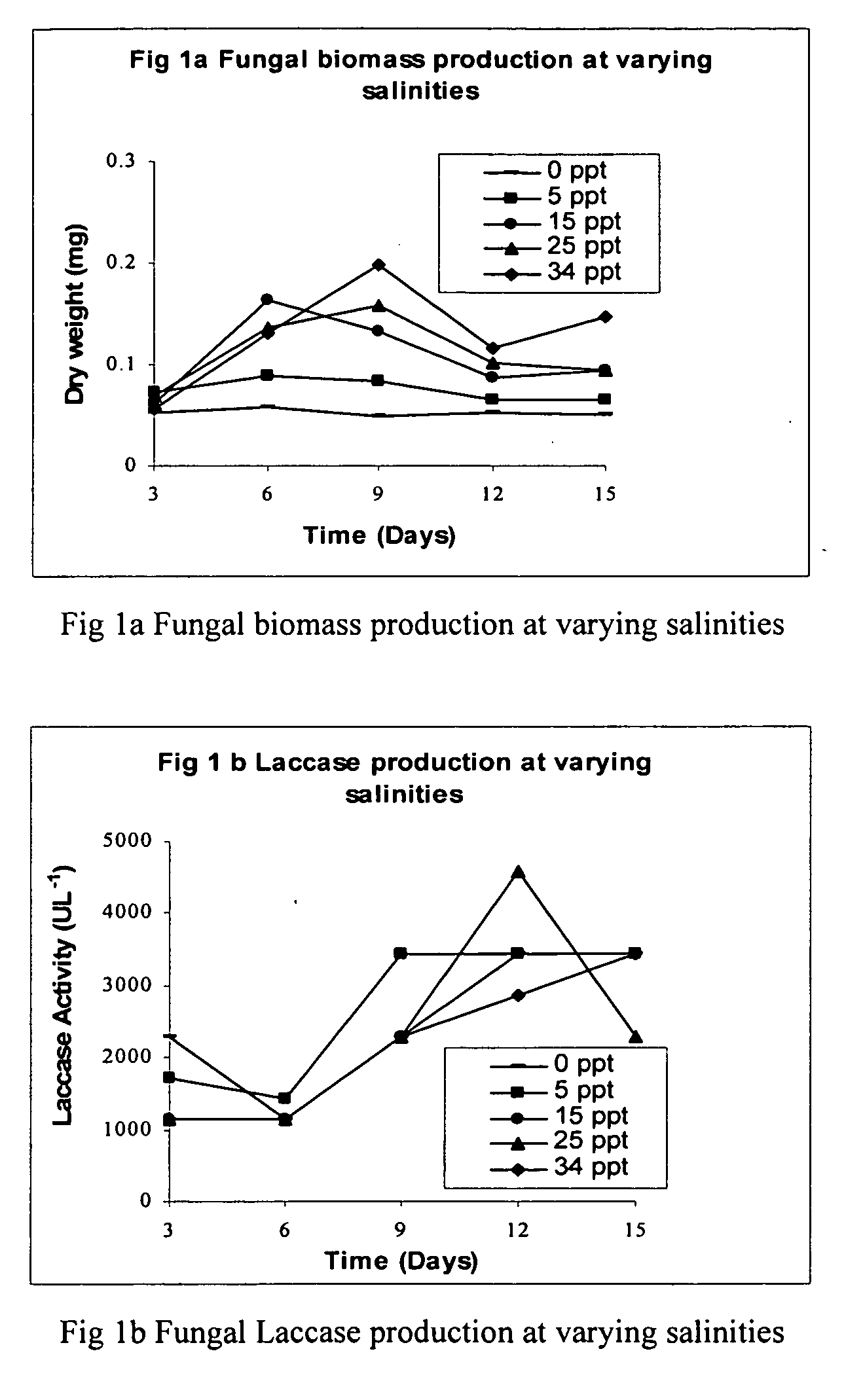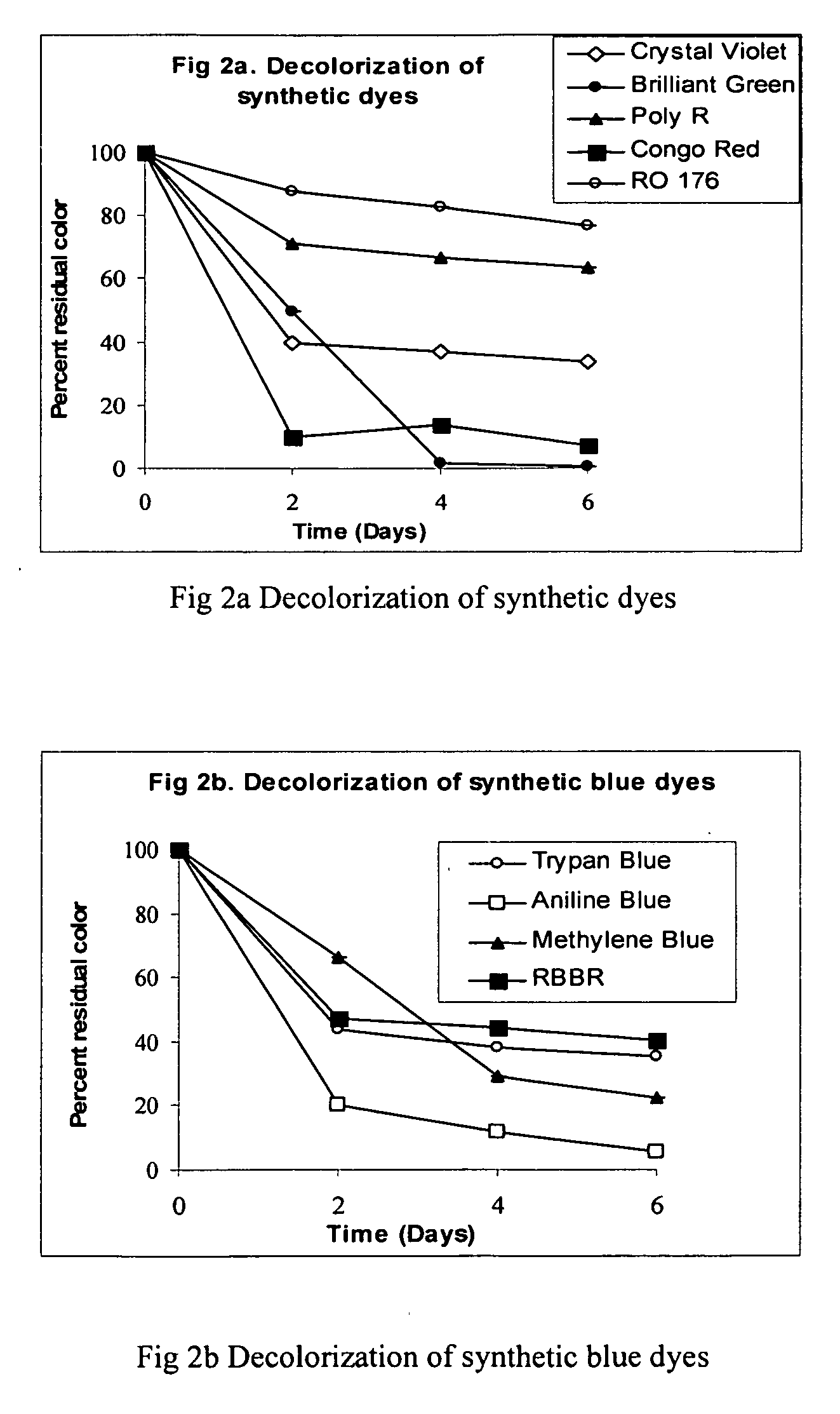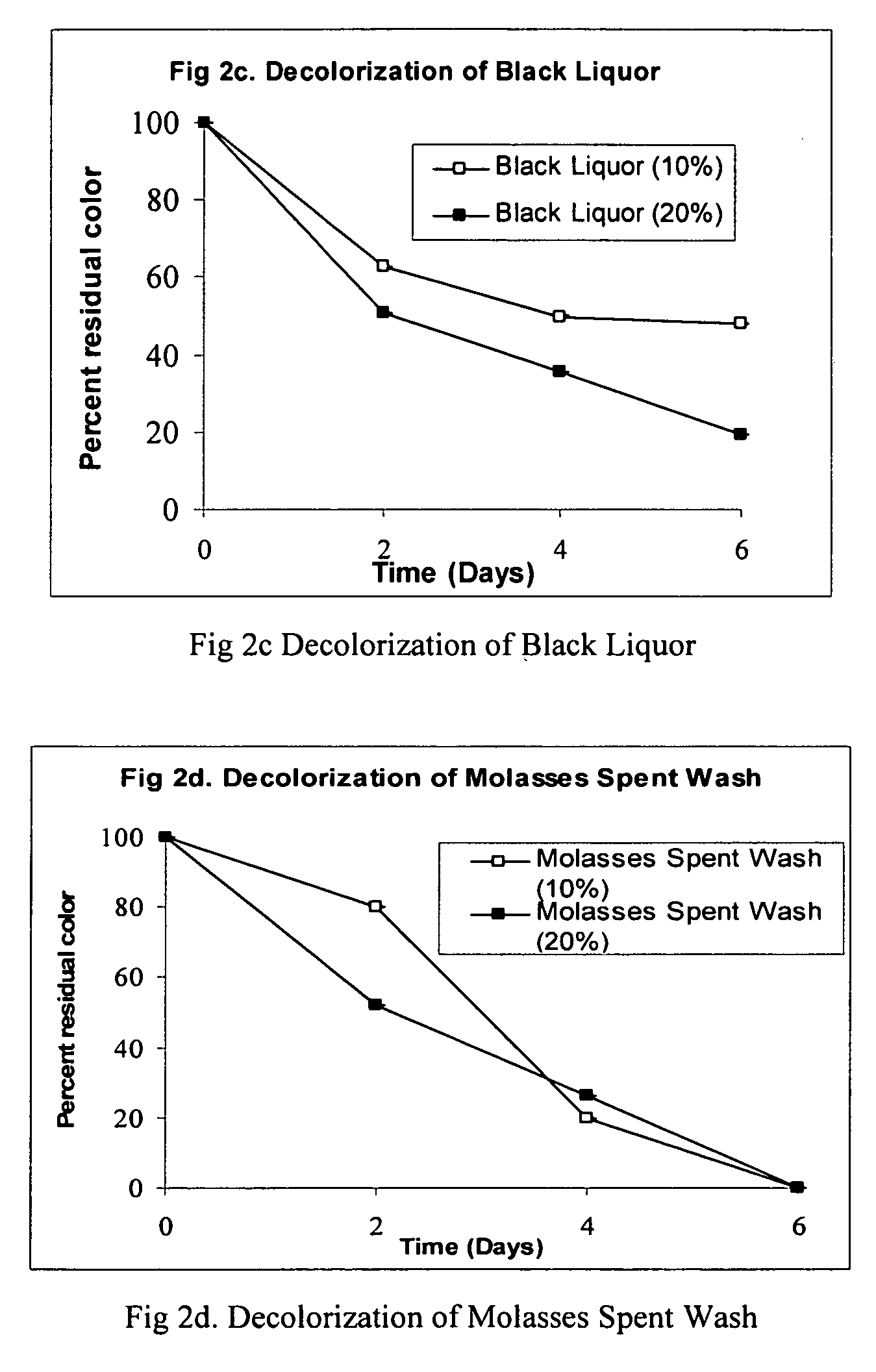Novel Processes for Decolorization of Colored Effluents
a technology of colored effluents and processes, applied in biochemical apparatus and processes, biological water/sewage treatment, microorganisms, etc., can solve the problems of ineffective commercialization, acute or chronic toxicity of chlorinated organic compounds, and insufficient decolorization effect, etc., to achieve efficient utilization
- Summary
- Abstract
- Description
- Claims
- Application Information
AI Technical Summary
Benefits of technology
Problems solved by technology
Method used
Image
Examples
example 1
[0067]The growth of MTCC 5159 was determined in liquid medium containing 1% glucose, 0.2% peptone and 0.1% yeast extract (hereafter called B & K medium) dissolved in sea water varying in salinity from 0 to 34 ppt and pH of 7.0. The culture was harvested in triplicates on the days 3, 6, 9, 12 and 15, rinsed in distilled water and then filtered through dried, pre-weighed GF / C filter papers and dried to a constant weight. The difference in weight was expressed as mg dry weight. Accordingly FIG. 1a shows that the maximum biomass is produced in medium prepared in 34 ppt seawater on day 9. The laccase activity in the culture supernatant was measured using 2 mM ABTS prepared in 100 mM glycine-HCl buffer (pH 3) at 405 nm spectrophotometrically as a function of time. Accordingly FIG. 1b shows that the maximum laccase production in medium prepared with 25 ppt seawater on day 12.
example 2
[0068]In order to enhance the laccase production by MTCC 5159 various inducers were added to a 3 day old culture grown in B&K medium prepared in 25 ppt sea water having a pH of 7.0. The inducers such as p-anisidine, catechol, gualacol, ferulic acid, vanillic acid, veratryl alcohol and 2,5 dimethyl aniline were used at a final concentration of 1 mM. Copper sulphate at a concentration of 2 mM, indulin at 0.25% and a combination of 2 mM copper sulphate and 1 mM guaiacol were used. The laccase activity in the culture supernatant was measured at an interval of 3 days up to 21 days as described in Example 1.
Dyes which are generally used for decolorization were also tested for their laccase induction properties. Trypan blue, aniline blue and remazol brilliant blue R at a final concentration of 0.04%, methylene blue, crystal violet, brilliant green and congo red at 0.02% and reactive orange 176 at 0.015% final concentration were added to B & K medium prepared in 25 ppt sea water having the ...
example 3
[0070]The fungus MTCC 5159 was tested for its ability to decolorize various dyes and effluents by monitoring the change in its specific absorbance maxima every alternate day over a period of 6 days after the dye / effluents were added. The dye was added to a six day old culture growing in the B & K medium as described above and the time of addition was considered to be the 0 day. The final concentration of the dye in the medium on day zero (immediately after adding) was considered to be 100%. The extent of decolorization was recorded as residual color (in percentage). Trypan blue, aniline blue, remazol brilliant blue R, methylene blue, crystal violet, brilliant green, congo red and reactive orange 176 (concentration as mentioned in the Table 1b) were monitored at their absorbance maxima in B&K medium which were 599, 585, 597, 663, 589, 623, 486 and 499 nm respectively. Effluents like textile effluent A, B, MSW and black liquor were also monitored at their absorbance maxima in B&K medi...
PUM
| Property | Measurement | Unit |
|---|---|---|
| pH | aaaaa | aaaaa |
| dry weight | aaaaa | aaaaa |
| temperature | aaaaa | aaaaa |
Abstract
Description
Claims
Application Information
 Login to View More
Login to View More - R&D
- Intellectual Property
- Life Sciences
- Materials
- Tech Scout
- Unparalleled Data Quality
- Higher Quality Content
- 60% Fewer Hallucinations
Browse by: Latest US Patents, China's latest patents, Technical Efficacy Thesaurus, Application Domain, Technology Topic, Popular Technical Reports.
© 2025 PatSnap. All rights reserved.Legal|Privacy policy|Modern Slavery Act Transparency Statement|Sitemap|About US| Contact US: help@patsnap.com



